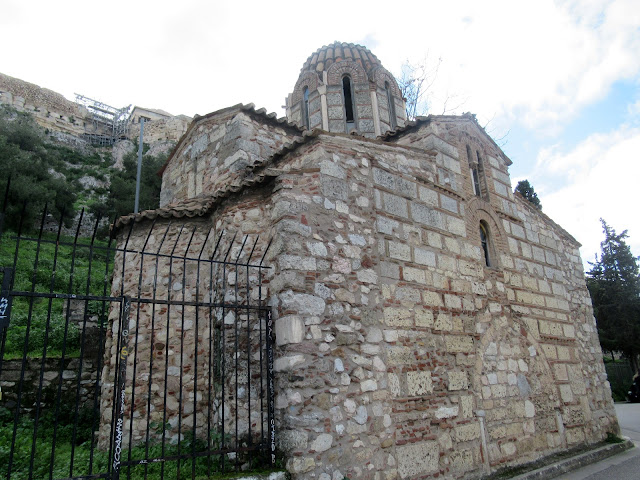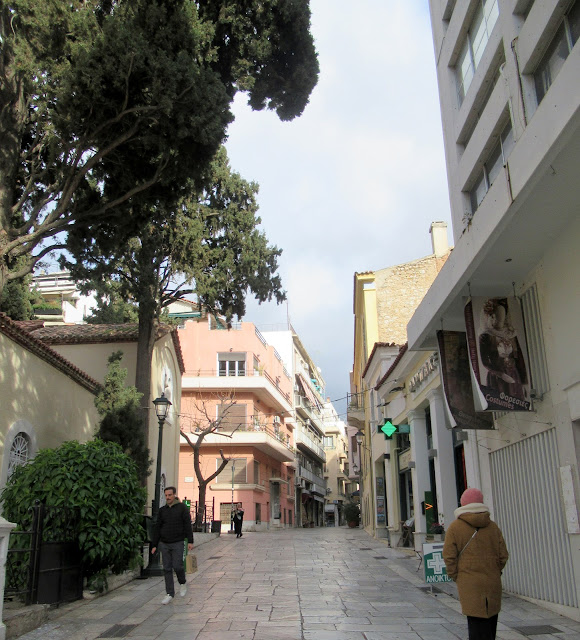Two weeks ago we decided to go and see Carl Bloch's lost masterpiece which was being exhibited in Athens, according to the Guardian
The bus dropped us off in Syntagma Square, by the Houses of Parliament
and we started walking down Metropoleos Street
the bread they sell in this bakery must be good, given the queue.
we soon arrived at the Cathedral

the square at the front
the building of the the Metropolitan Cathedral of the Annunciation started in 1842 and was completed 20 years later. Workers used marble from 72 demolished churches to build the cathedral's immense walls
Pandrosou Street was fairly quiet - it's a different matter in the summer when all the tourists descend
A recent article in the Guardian describes how Plaka has been discovered 'by developers, avaricious investors and global real estate firms' who are posing an existential threat to its existence. 'On the back of the tourist boom, entire buildings have fallen prey to the short-term rental industry and Airbnb. The few shops that have held out are, like residents, on the brink of extinction. The reality now is that residents are leaving and not only because laws are being violated; the crowds, the noise, the chaos have made their lives unbearable'.
The article points out that Plaka is 'one of the oldest neighbourhoods in the western world. Few neighbourhoods in Europe have been lived in as continuously as Plaka. Nestled on the northern and eastern slopes of the Acropolis, its mansions and two-storey buildings, wrapped around the Agora and other archaeological sites, it is an area that has been inhabited since neolithic times. For Greeks the quarter is not just a window on the classical world but an unbreakable link with antiquity'.
From here, a view of the Acropolis
and an extended view of the city of Athens ahead

the walkway in front of this house

is made of glass so that one can see the ancient ruins that were discovered during the excavations
which is also a museum, part of the Museum of Greek Folk Art - 'The House on Panos Street - Man and Tools: Aspects of Labour in the Pre-Industrial World'
Soon after we had arrived at the taverna, The Old Fisherman's Tavern
which is big, four different buildings. We chose this one
We had a delicious lunch and then moved on
Next to the taverna is the small church of St John the Theologian which dates back to the 11th century AD. The date was confirmed during maintenance work when a copper Byzantine coin form the tine of the Byzantine Emperor Alexios I Komninos (1081-1118 AD) was found on the ceiling of the church.
Like other Byzantine churches of that time, the masonry follows a system in which the contrast of white stone and red brick is the pattern. Above the door and the window there are small arches topped with pediments. We could not go in as the church was locked but during the maintenance work some frescoes were disclosed, which, without being of a great artistic value, remain important, as very few can be found in Athens that date back to the 12th century.
Some gorgeous restored neo-classical buildings on our way

































.JPG)
.JPG)




.JPG)
.JPG)
.JPG)
.JPG)
.JPG)
.JPG)
.JPG)
.JPG)
.JPG)
.JPG)
.JPG)
.JPG)
.JPG)
.JPG)
.JPG)









No comments:
Post a Comment